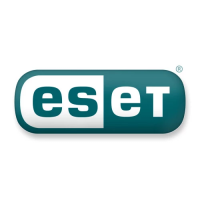22
Adware itself is not dangerous – users may only be
bothered by the advertisements. The danger lies in the
fact that adware may also perform tracking functions (as
spyware does).
If you decide to use a freeware product, please pay
particular attention to the installation program. The
installer will most likely notify you of the installation of
an extra adware program. Often you will be allowed to
cancel it and install the program without adware.
Some programs will not install without adware, or their
functionality will be limited. This means that adware may
often access the system in a “legal” way, because users
have agreed to it. In this case, it is better to be safe than
sorry. If there is a file detected as adware on your
computer, it is advisable to delete it, since there is a high
probability that it contains malicious code.
6.1.5 Spyware
This category covers all applications which send private
information without user consent/awareness. Spyware
uses tracking functions to send various statistical data
such as a list of visited websites, email addresses from
the user‘s contact list, or a list of recorded keystrokes.
The authors of spyware claim that these techniques aim
to find out more about users’ needs and interests and
allow better-targeted advertisement. The problem is
that there is no clear distinction between useful and
malicious applications and no one can be sure that the
retrieved information will not be misused. The data
obtained by spyware applications may contain security
codes, PINs, bank account numbers, etc. Spyware is
often bundled with free versions of a program by its
author in order to generate revenue or to offer an
incentive for purchasing the software. Often, users are
informed of the presence of spyware during a program‘s
installation to give them an incentive to upgrade to a
paid version without it.
Examples of well-known freeware products which come
bundled with spyware are client applications of P2P
(peer-to-peer) networks. Spyfalcon or Spy Sheriff (and
many more) belong to a specific spyware subcategory –
they appear to be antispyware programs, but in fact
they are spyware programs themselves.
If a file is detected as spyware on your computer, we
recommend deleting it, since there is a high probability
that it contains malicious code.
6.1.6 Potentially unsafe applications
There are many legitimate programs whose function is
to simplify the administration of networked computers.
However, in the wrong hands they may be misused for
malicious purposes. ESET Cybersecurity provides the
option to detect such threats.
“Potentially unsafe applications” is the classification used
for commercial, legitimate software. This classification
includes programs such as remote access tools,
password-cracking applications, and keyloggers (a
program that records each keystroke a user types).
If you find that there is a potentially unsafe application
present and running on your computer (and you did not
install it), please consult your network administrator or
remove the application.
6.1.7 Potentially unwanted applications
Potentially unwanted applications are not necessarily
intended to be malicious, but may affect the
performance of your computer in a negative way. Such
applications usually require consent for installation. If
they are present on your computer, your system
behaves differently (compared to the way it behaved
before their installation). The most significant changes
are:
new windows you haven’t seen previously are opened
activation and running of hidden processes
increased usage of system resources
changes in search results
application communicates with remote servers.

